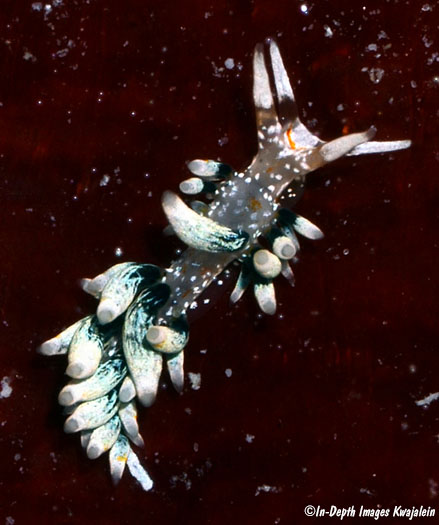
Although initially uncertain where to put this one, there are now enough photos to show pretty definitely the rounded anterior foot corners that, with the tall smooth rhinophores, suggest a species of Tenellia or Eubranchus. Indeed, Gosliner et al (2018) figure a very similar animal that is probably the same species as Tenellia sp. 56, differing from most of ours in the lighter color in the cerata cores. Since those cores are extensions of the digestive system, the color is highly dependent on what the animals have been eating. However, as shown by the range of photos below, there is some variation among Marshall Islands specimens both in color and in the shape of the cerata. Internal anatomy or DNA would have to be checked to better place it. Specimens have been found at Kwajalein and Majuro Atolls and from seaward, pinnacle and lagoon reefs where they are usually under rocks. The specimen immediately below was in about 15m depth on the seaward side of Gehh Island, Kwajalein Atoll, on 17 October 2016. It shows the characteristic curved orange line in front of the rhinophores as seen in Gosliner et al (2018)'s Tenellia sp. 56.

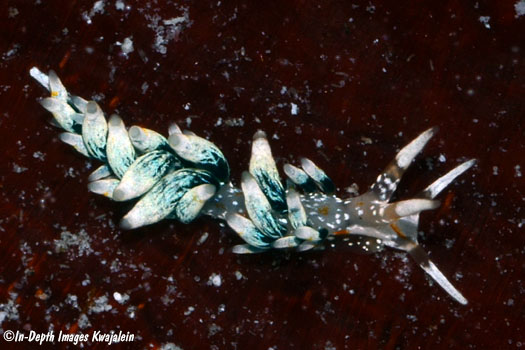
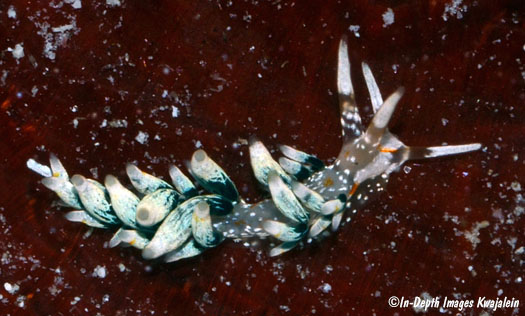
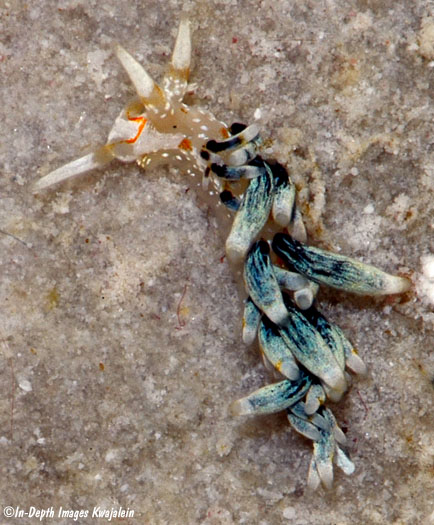
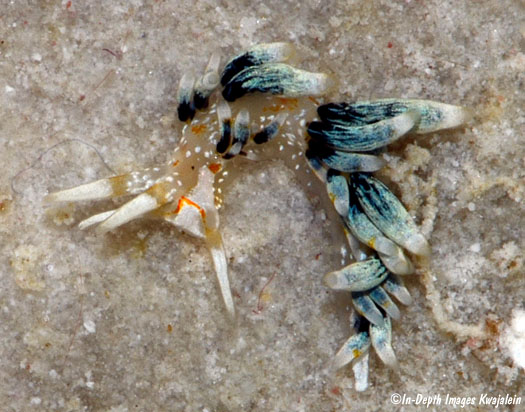
The first one of these found was a single 5mm long individual under a rock on a Kwajalein midlagoon pinnacle on 24 September 2012. We were not able to get high resolution photos of this animal.
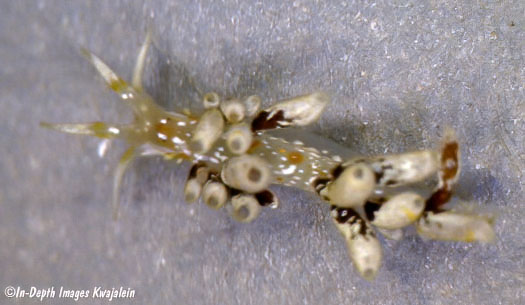
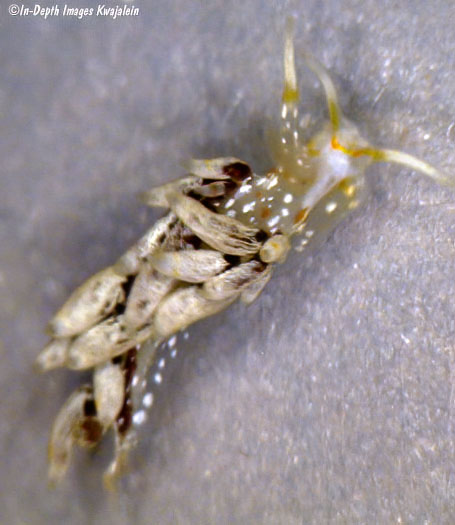
There have been additional sightings of this species (below) from Majuro Atoll by John and Lynette Flynn and by Ken Cone and Beth Van Zummeren.
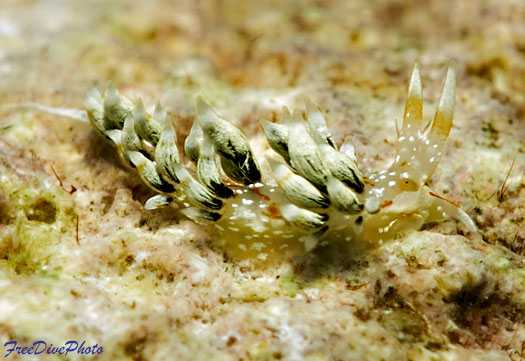
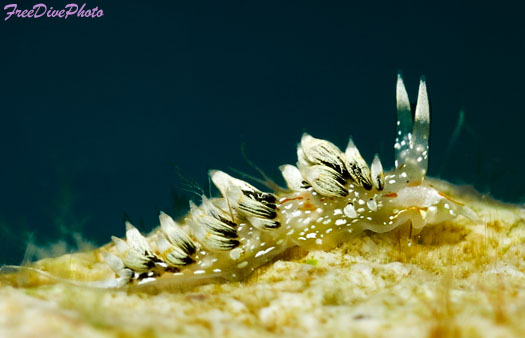
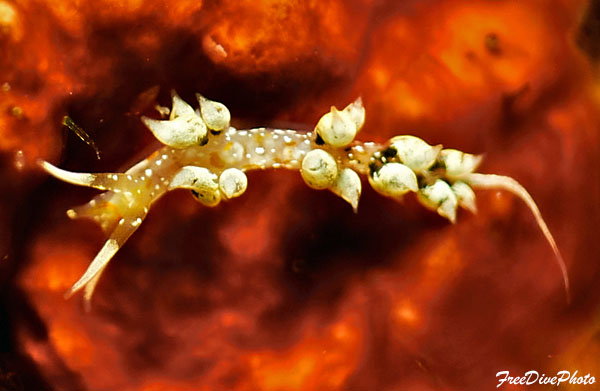
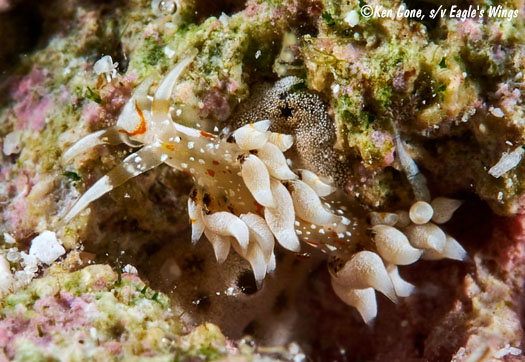
Some specimens seem to lack the orange line in front of the rhinophores.
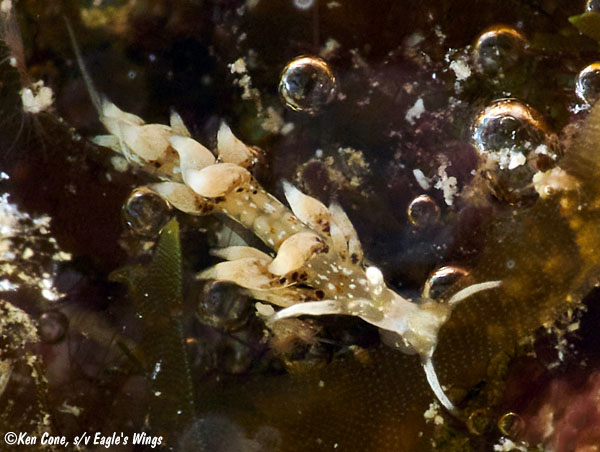
The specimen below is a bit more decorated with curved orange lines on the body, somewhat reminiscent of Cratena simba from the western Pacific, but in all other external features matches Tenellia sp. e653. This photo is from Jay Lord, taken in one of the reef quarries at Kwajalein Island.
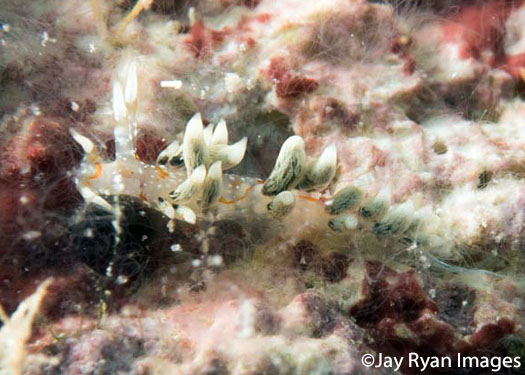
Discussions with John and Lynette Flynn and examination of a number of their photos helped us decide where to place these animals.
Created 6 October 2014
Updated 26 October 2021